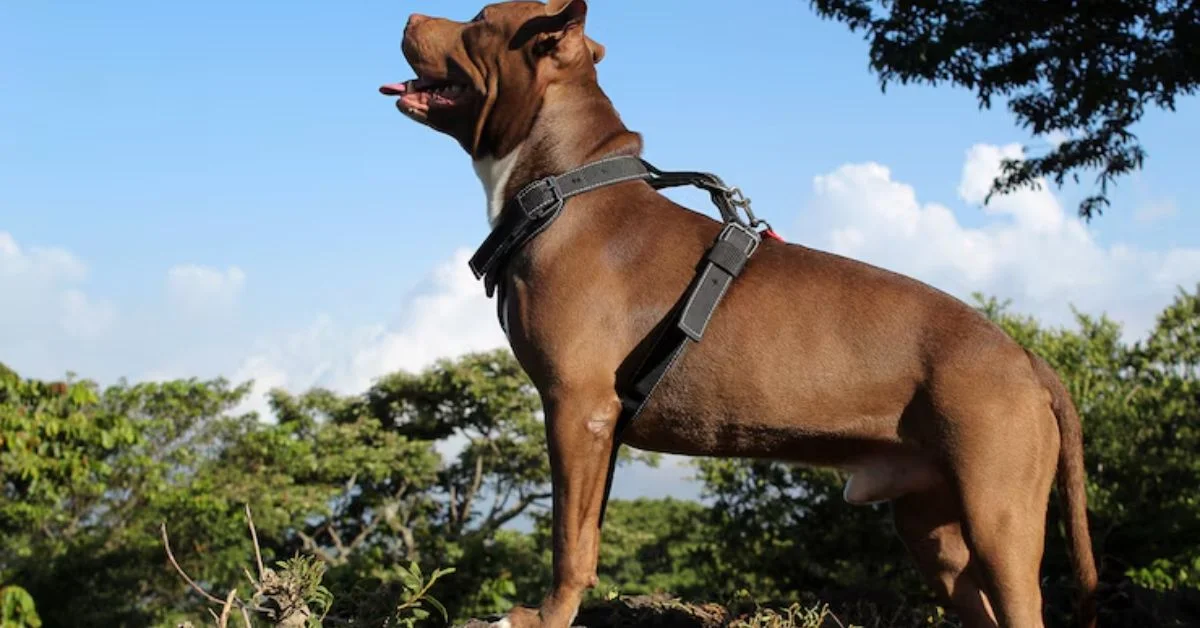If you’re searching for detailed information on the Hanging Tree Dog, you’re likely curious about what makes this breed different from your average working dog. You may have seen one dart across a dusty field, fearless and agile, eyes locked on cattle or sheep, or heard ranchers speak of it with rare admiration. Known for its intensity, intelligence, and toughness, the Hanging Tree Dog is a breed specifically designed for ranch work—not by accident, but by deliberate and disciplined breeding.
In this article, you’ll discover the breed’s origin, its defining characteristics, temperament, working ability, and why it remains one of the most respected ranch dogs in the United States today. This isn’t a pet-store pup—it’s a purpose-built working companion with a story as American as the land it works on.
A Breed with a Purpose: The Origin Story
Unlike many popular breeds with ancient or unclear histories, the Hanging Tree Dog was created with an intentional vision during the late 20th century. The name itself is steeped in Western grit and legacy, drawn from the Hanging Tree Ranch in Texas, owned by renowned cowboy Gary Ericsson and his son, Choc.
The Breeding Blueprint
The Ericssons wanted to create the ideal cowdog—one that combined stamina, intelligence, courage, and versatility. Most importantly, they wanted a dog that could withstand harsh climates, long days, and ornery cattle without backing down or burning out.
They accomplished this by crossing four key breeds:
- Border Collie – for intelligence, herding instinct, and obedience
- Catahoula Leopard Dog – for tracking ability, strength, and assertiveness
- Australian Kelpie – for speed, agility, and heat tolerance
- Australian Shepherd – for trainability and loyalty
The result? A breed uniquely suited to the demands of modern cattle ranching.
Defining Traits of the Hanging Tree Dog
Physical Characteristics
- Weight: 40–60 pounds
- Height: 18–23 inches
- Coat: Short to medium, weather-resistant
- Color Variants: Black, red, merle, brindle, or mixed
- Eyes: Intense gaze, often with one or both eyes blue or marbled
Compact, muscular, and nimble, the Hanging Tree Dog isn’t oversized. Its build allows for explosive energy, quick turns, and close-quarters work—whether in open fields or tight pens.
Temperament
- Bold: These dogs won’t back down from 1,200-pound bulls.
- Driven: Once they lock into a task, they rarely lose focus.
- Independent: They think on their feet but still respond to commands.
- Loyal: Deep bonds form with owners, though they may be aloof with strangers.
- Resilient: They handle heat, cold, and rugged terrain with ease.
Unlike many other herding breeds, the Hanging Tree Dog is bred for grit over charm. They’re not ideal for casual pet owners or indoor lifestyles.
What Makes the Hanging Tree Dog Unique?
The Hanging Tree Dog isn’t a herder in the traditional sense. It doesn’t gently guide sheep into a pen. It confronts unruly cattle head-on, often by gripping a heel or nose to get them moving. That bite-and-hold style is crucial in moving stubborn livestock.
A Few Unique Features:
- Cow Sense: Natural instinct for reading and responding to cattle behavior
- Heel and Head Work: Capable of both chasing and stopping animals
- All-Day Energy: Can run, bite, and chase for 12+ hours without quitting
- Trainable Yet Autonomous: Obeys commands but makes real-time decisions in the field
These dogs are often trusted with large-scale operations involving thousands of cattle over sprawling terrain. In such environments, loyalty and stamina are as important as raw skill.
Training the Hanging Tree Dog
Training these dogs is both a science and an art. While intelligence is a strength, the Hanging Tree Dog’s high drive means training must start early—usually by 8–10 weeks—and remain consistent for life.
Early Socialization Is Crucial
Without early exposure to different environments, people, and animals, Hanging Tree Dogs can become overly aggressive or anxious. They thrive when socialized with other working dogs and livestock from a young age.
Training Goals:
- Basic Obedience: Sit, stay, recall, and down
- Livestock Introduction: Gradual exposure to cattle in controlled settings
- Drive Channeling: Teach when to hold off or push harder
- Whistle/Voice Commands: Useful over long distances on open land
Common Mistakes to Avoid
- Over-praising: This can reduce working drive
- Underworking: Leads to boredom, destructive behavior
- No livestock exposure: This breed needs real-world practice, not just obedience classes
Working Capabilities: Beyond the Herd
Although bred primarily for ranching, Hanging Tree Dogs are increasingly used in:
- Search and Rescue: Their scenting ability and endurance make them capable trackers.
- Hunting Support: Some help flush and retrieve game.
- Competitive Herding: In sports or stockdog trials, they are dominant performers.
- Agility Competitions: With athleticism that rivals Border Collies.
Some owners even deploy them in emergency scenarios, where toughness and intelligence make them valuable allies in disaster zones or rural patrols.
Ideal Living Environment
This dog is not suited for urban apartments or sedentary families. The Hanging Tree Dog thrives when it has:
- Space to roam
- A job to do
- Consistent structure
- Other working animals around
If you own a small farm or a large property and need a capable partner, the Hanging Tree Dog could be ideal. For city dwellers, it’s best to admire this breed from afar.
Health and Lifespan
Lifespan: 12–15 years with good care
Common Health Issues:
- Hip Dysplasia: Watch for limping or stiffness
- Eye Disorders: Regular checks are recommended
- Joint Strain: Due to physical workload
- Skin Allergies: Occasionally triggered by environment
Keeping your Hanging Tree Dog healthy means regular vet visits, a high-protein diet, and plenty of rest between working days.
Breeding Standards and Registry
While the Hanging Tree Dog is not currently recognized by the American Kennel Club (AKC), it is recognized by the American Cowdog Association (ACA), which monitors bloodlines, breeding ethics, and working performance.
Registry Requirements:
- Must be of verifiable lineage traced to the original Ericsson bloodline
- Dogs must demonstrate working ability, not just appearance
- Owners are often required to show proof of ranch or farm work
Because of this rigorous process, reputable breeders can be hard to find, and puppies are often booked months in advance.
Cost and Ownership Considerations
Average Cost: $1,000–$2,000 (USD)
Due to limited supply and high working demand, Hanging Tree Dogs are an investment. That investment includes:
- Time: Training takes months, sometimes years.
- Money: Food, vet, gear, transportation.
- Commitment: These dogs bond deeply and rely on structure.
For serious livestock professionals, the payoff is immense. For hobbyists or casual pet seekers, the reality may be overwhelming.
Conclusion: More Than a Breed, It’s a Philosophy
The Hanging Tree Dog isn’t a trend. It isn’t bred for looks or designed for city parks. It’s a testament to selective breeding for performance, character, and heart. It represents a culture—rugged, self-reliant, proud of work done well. That’s why it’s revered not just as a dog, but as a partner in the field.
Before getting one, ask not just if you want a Hanging Tree Dog—but whether you can give it the kind of life it was born to lead.
FAQs
1. Is the Hanging Tree Dog a good family pet?
Not typically. This breed requires constant stimulation, a working role, and an outdoor lifestyle. It’s best suited to experienced handlers on farms or ranches.
2. How do I find a reputable breeder?
Check with the American Cowdog Association or regional ranching networks. Avoid online-only breeders with no working stock history.
3. Can the Hanging Tree Dog live indoors?
Occasionally, but only if it spends most of its day working or exercising outdoors. These dogs are not suited to sedentary or indoor-only life.
4. What makes it different from a Border Collie or Kelpie?
Hanging Tree Dogs are more aggressive with livestock and better suited for cattle work, particularly in large or rough terrain. They are less likely to rely on stalking and more on drive and bite.
5. Do they need professional training?
Not always, but professional guidance is recommended. Their intelligence makes them trainable, but their independence can be challenging without experienced handling.
For more information, click here.









